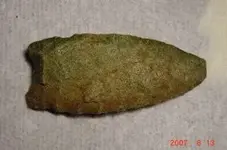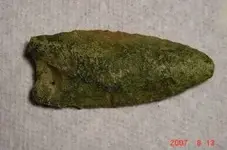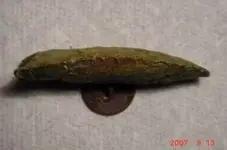Well...from what I see it is a "Clovis" type. I say type for any style as the original is the first one with the name. It appears NOT to be fluted. It could also be a "Holcomb" or "Hi-Lo" type of unfluted Paleo point or blade. I am refering to my book "Projectile Point Typology For Pennsylvania" by Gary L. Fogelman. It may have a different name in different states and/ or regions. But it definatly looks to be a Paleo era!!! Which is to say it is from 12,000 - 8,000 B.C. or 10,000 to 14,000 years old or more.
I hope it helps!
respects,
~Z~, aka Zeawolf , aka Stan Self ADJ. McNeill's Rngers SCV




